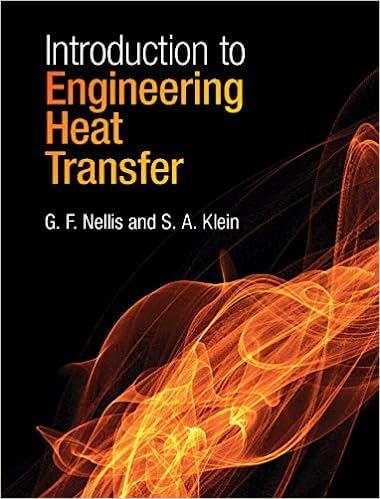Please solve using MATLAB code, furthermore take WBT =70 degrees farienheit. please do not use any functions like fzero(), integral, linsolve, integral2 etc

The turbine "cold-end" system generally consists of turbine exhaust end, condenser, and cooling tower (Fig. 1). For a 250MW unit, the turbine performance data with the maximum steam throttle flow can be Figure 1 Simulation structure diagram for a turbine cold-end system. approximated by the two fourth degree polynomial equations as follows: NHR=45.19(CP)4+420(CP)31442(CP)2+2248(CP)+6666(a) and NKW=4,883(CP)444,890(CP)3+152,600(CP)2231,500(CP)+383,400 The condenser and mechanical-draft cooling tower have the performance equations, respectively, CP=1.63020.50095101(CWT) +0.55796103(CWT)2+0.32946103(HL)0.10229104(HL)(CWT)+0.16253106(HL)(CWT)2+0.42658106(HL)20.92331108(HL)2(CWT)+0.712651010(HL)2(CWT)2forWFR=145,000GPM and CWT=0.10046102+0.22801103(WFR)+0.85396(CR)+0.18617105(CR)(WFR)+0.1095710(WBT)0.22425105(WBT)(WFR)0.11978101(WBT)(CR)+0.14378107(WBT)(CR)(WFR). (The circulating water flow is assumed to flow at the rate of 145,000gpm.) In addition to the given performance equations give above, we also need two coupling equations to complete the mathematical model for this cooling system. The first equation is the coupling between the condenser and the cooling tower. The heat load for these two must be the same. The coupling equation is CR=2000(WFR)(HL) The second equation is the coupling between the steam turbine and the condenser. When minor heat losses from the turbine system are neglected, the turbine waste heat rejection must take place entirely in the condenser. That is, the waste heat rejection is also the amount of heat removed from the condenser. In equation form, this can be expressed as HL=106(NHR3,412)(NKW).(f) The four performance equations and two coupling equations constitute the mathematical model for the turbine "cold-end" system. There are six equations for six unknowns CP,CR,CWT,NHR,NKW, and HL. Since the system is not of sequential type, one must solve these equations simultaneously, employing, for example, the root-finding methods discussed in class. Use the approach based on the Newton-Raphson method to estimate the following quantities: (1) Heat load (2) Condenser pressure (3) Turbine net heat rate (4) Turbine net output (5) Tower approach, and (6) Tower cooling range under various ambient wet-bulb temperatures. Program this problem in MATL,AB using the Newton-Raphson method. (Please do not use any advanced MATLAB functions for this assignment; otherwise. you will be marked wrong.) In terms of grading, I will be looking for the following: a) Understanding and statement of the objective(s) of this programming assignment, including a description of the physical problem being analyzed ( 10 Points) b) Correct conversion of the mathematical model to numerical model. This will include a detailed description of the applicable procedures for the Newton-Raphson method (I0 Points) c) Accurate conversion of numerical model to algorithm. This will include detailed description of the specific algorithens used in implanting the Newion-Raphson method to solve this problem (15 Points) d) Accurate conversion of algorithm to code. Your MAT ALB code is graded here. You will be graded on the accuracy of the code, the formatting, and generous use of comment cards ( 20 Points) e) Obtaining the best possible solutions from the code. The aceuracy of your results is graded here (20) f) Great presentation (report writing) (20): Clear and concise writing; organized and casy-to-follow presentation. This means that your report will have a cover, summary, introduction, description of the mathematical numerical problem, the equations solved, the algorithms fed into MATLAB, the results, discussion of the results, and any concluding remarks, including a discussion of the problems that you have encountered in carrying out this assignment. It should be clear how you set up the problem before you solve it with MATL.AB. We usually prefer reports that are typed, as opposed to hand-written ones. Nomenclature: NKWNHRCPCWTHLWBTRHCRWFR=turbineactoutput=rurbinenetheotrate=condenserpressure=coldwatertemperature=heatload=ambientwet-bulbtemperature=ambientrelativelumidity=coolingrange=coolingwaterflowrate










